Have We Forgotten Our Heroes? Chapter 8
SERVICE:
U.S. Marine Corps 1942-1945
U.S. Army Reserve 1946-1949
Iowa Air National Guard 1949-1951
U.S. Air Force 1951-1977
World War II 1942-1945
Cold War 1945-1977
Korean War 1953
Vietnam War 1967-1973 (POW)
Bud Day was born on February 24, 1925, in Sioux City, Iowa. He enlisted in the U.S. Marine Corps on December 10, 1942, and spent 30 months in the South Pacific during World War II before receiving an honorable discharge on November 24, 1945.
After the war, Day joined the U.S. Army Reserve on December 11, 1946, and served until December 10, 1949. He was appointed a 2d Lt in the Iowa Air National Guard on May 17, 1950, and went on active duty in the U.S. Air Force on March 15, 1951.
Lt Day completed pilot training and was awarded his pilot wings at Webb AFB, Texas, in September 1952, and completed All-Weather Interceptor School and Gunnery School in December 1952. He served as an F-84 Thunder jet pilot with the 559th Strategic Fighter Squadron of the 12th Strategic Fighter Wing at Bergstrom AFB, Texas, from February 1953 to August 1955, with deployments to Omisawa, Japan, during this time in support of the Korean War.
His next assignment was as an F-84 and F-100 Super Sabre pilot with the 55th Fighter Bomber Squadron of the 20th Fighter Bomber Wing and later on the wing staff at RAF Wethersfield, England, from August 1955 to June 1959, followed by service as an Assistant Professor of Aerospace Science at the Air Force ROTC detachment at St. Louis University in St. Louis, Missouri, from June 1959 to August 1963. During his service in England, he became the first person ever to live through a no-chute bailout from a jet fighter.
CPT Day attended Armed Forces Staff College for Counterinsurgency Indoctrination training at Norfolk, Virginia, from August 1963 to January 1964, and then served as an Air Force Advisor to the New York Air National Guard at Niagara Falls Municipal Airport, New York, from January 1964 to April 1967.
MAJ Day then deployed to Southeast Asia, serving first as an F-100 Assistant Operations Officer at Tuy Hoa AB, South Vietnam, before organizing and serving as the first commander of the Misty Super FACs at Phu Cat AB, South Vietnam, from June 1967 until he was forced to eject over North Vietnam and was taken as a Prisoner of War on August 26, 1967. He managed to escape from his captors and make it into South Vietnam before being recaptured and taken to Hanoi. After spending 2,028 days in captivity, COL Day was released during Operation Homecoming on March 14, 1973. He was briefly hospitalized to recover from his injuries at March AFB, California, and then received an Air Force Institute of Technology assignment to complete his PhD in Political Science at Arizona State University from August 1973 to July 1974.
His final assignment was as an F-4 Phantom II pilot and Vice Commander of the 33rd Tactical Fighter Wing at Eglin AFB, Florida, from September 1974 until his retirement from the Air Force on December 9, 1977. MISTY 1, Col Bud Day, died on July 27, 2013, and was buried at Barrancas National Cemetery at NAS Pensacola, Florida.
His Medal of Honor Citation reads:
On 26 August 1967, Col. Day was forced to eject from his aircraft over North Vietnam when it was hit by ground fire. His right arm was broken in 3 places, and his left knee was badly sprained. He was immediately captured by hostile forces and taken to a prison camp where he was interrogated and severely tortured. After causing the guards to relax their vigilance, Col. Day escaped into the jungle and began the trek toward South Vietnam. Despite injuries inflicted by fragments of a bomb or rocket, he continued southward surviving only on a few berries and uncooked frogs. He successfully evaded enemy patrols and reached the Ben Hai River, where he encountered U.S. artillery barrages. With the aid of a bamboo log float, Col. Day swam across the river and entered the demilitarized zone. Due to delirium, he lost his sense of direction and wandered aimlessly for several days. After several unsuccessful attempts to signal U.S. aircraft, he was ambushed and recaptured by the Viet Cong, sustaining gunshot wounds to his left hand and thigh. He was returned to the prison from which he had escaped and later was moved to Hanoi after giving his captors false information to questions put before him. Physically, Col. Day was totally debilitated and unable to perform even the simplest task for himself. Despite his many injuries, he continued to offer maximum resistance. His personal bravery in the face of deadly enemy pressure was significant in saving the lives of fellow aviators who were still flying against the enemy. Col. Day’s conspicuous gallantry and intrepidity at the risk of his life above and beyond the call of duty are in keeping with the highest traditions of the U.S. Air Force and reflect great credit upon himself and the U.S. Armed Forces.
Have We Forgotten our Heroes – Chapter 1 Pitzer
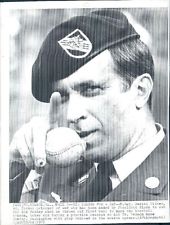 SGM Daniel Lee Pitzer
SGM Daniel Lee Pitzer
Birth: Nov. 23, 1930
Fairview, West Virginia, USA
Death: Mar. 9, 1995
Fayetteville, Cumberland County, North Carolina, USA
Daniel Pitzer was born in Fairview, WV, and joined the West Virginia National Guard in December of 1947. He graduated from West Virginia Public Schools in 1950. During his first year of college, his National Guard unit was called to active duty and moved to Ft. Benning, GA. He joined active Army, volunteering for airborne training, receiving his Airborne Wings on his 21st birthday. His first assignment was to XVIII Airborne Corps Artillery as a communications team leader and later transferred to the 5th RCT, Korea.
At the end of the Korean Conflict, he was transferred to Otsu, Japan, where he was assigned to Headquarters, South West Command, Infantry School at Ft. Benning, 3rd Armored Division Combat Command “A’ in Kirchgoens, Germany, and finally to 82nd Airborne Division at Fort Bragg, NC. He volunteered for Special Forces in 1960 and served as a medic, heavy and light weapons sergeant and team leader on various A-teams during his 15-year military career.
He arrived in the Republic of Vietnam in July of 1963. On October 29, 1963, while out on patrol with the Vietnamese Special Forces (LLDB), he was wounded and captured by the Viet Cong. He was a prisoner of war for four years, gaining release in 1967. One of his fellow POWs was Nick Rowe. On Nov. 11, 1967, after four years of torture and suffering from Beri Beri, malnutrition, malaria, hepatitis and having lost more than 85 lbs, he was returned to U.S. control.
Upon his return to the United States, he was hospitalized for eight months at Fort Bragg’s Womack Army Hospital, and following his release he served in both the 6th Special Forces Group (A) and the 5th Special Forces Group (A). His follow-on assignment was as an instructor with the U.S. Army JFK Center for Military Assistance.
In 1969, he wrote an article for Look Magazine regarding his four years in captivity. It follows next . . .
LOOK Magazine
February 18, 1969
THE ANIMAL CALLED POW“My Four Years in a Vietcong Prison
By MSgt Daniel Lee Pitzer, as told to Warren RogersIn Vietnam in 1963, LOOKS James Karales caught Dan Pitzer… slogging back from patrol. The next day, Pitzer was captured. For four years, like Solzhenitsyn’s Ivan Denisovich, he marveled each day to be still alive. His story:
GOING THERE was routine. We moved out at three in the morning of October 29, 1963 – Capt. Humbert R. Versace, a U.S. Army adviser, and Lt. James N. Rowe and I, both members of the Special Forces, the Army’s “Green Berets.” We were with a company of the South Vietnamese Army’s Special Forces, probing for Vietcong. Another company had taken off three hours earlier, to get around in back of the target village, 14 kilometers from our base. Our plan was to trap any VC in the village between us and the blocking company.
Routinely, we sloshed through rice paddies and swamps, from our camp at Tan Phu in An Xuyen Province, just about as far south as you could go in the Mekong Delta. When we reached the village, there were no VC. The company that had left earlier decided to return to camp. So did we, but by a different route.
On our way home, trudging along one of the uncounted canals that crisscross the delta, we drew fire. We fired back and moved, but the closer we got to our base, the more VC we ran into. Soon we were surrounded. We radioed for artillery and air support, but the VC kept jamming our signal. We managed, however, to squeeze one message through. I did my best as a medic for the wounded.
Captain Versace had lost his glasses and was having trouble seeing. Lieutenant Rowe had a small wound in his left thigh. It was impossible to tell how many VC there were, but we could see them coming on. We regrouped with a handful of Vietnamese, all that was left of the company, and withdrew about 70 yards to a canal. Just as I jumped in, the whole canal bank exploded. I looked up, and there was a VC with a K-50 submachine gun, firing almost point-blank. I could see flames spitting from the muzzle, and I could hear bees swarming past my ears. A K-50 fires a 35 round clip at the rate of 90-100 rounds a minute, and how the man mimed me I will never know. I shot him.
We left the canal and ran for a cane field. The VC spotted us and came running and firing. We were split up and confused, and I knew there was no hope of fighting our way out. I decided to swim for it. I dropped in the mud and buried my M-79 grenade launcher, maps and other gear. I heard Captain Versace yelling that he was hit. I hesitated. I did not want to be captured, but I could not run off on the Captain. Just as I reached him, something exploded-a mortar round or a concussion grenade-and I was knocked down, shrapnel in my right shoulder.
I looked up, and there was a VC with an automatic weapon pointed at me. He took away my .45 caliber automatic pistol and my wristwatch. He tied my hands behind me with the small towel that most Vietnamese peasants wear around their necks.
Other VC came up. We started walking the canal path, and then we were running because mortar rounds were coming in, apparently from our relief force. We caught up with other VC who had captured Lieutenant Rowe. They sat me down, took off my green canvas-and-leather jungle boots and socks and blindfolded me.
Some of the villagers gathered around, shouting and pelting me with rocks and dirt. The VC held them off and shoved me to a canal and into what I found out later was a sampan. As I fell, I cracked my left ankle against something and broke it. Under way, I could hear aircraft strafing and bombing, and soon we were receiving artillery fire too. We pulled up, and I was dragged ashore. When the planes went away, we got back in the sampan, moved a short distance on the canal and again went ashore. Artillery was still coming in, and we were all made to lie down. The VC offered us rice, but I was too wrought up to eat.
After dark, we moved along the canal to a little grass hut. From inside came the voice of Captain Versace: “Bac si! Bac si!” In Vietnamese, this means “doctor” or “medic.” The VC refused to let me help him. They tied Rowe and me together outside the building. The mosquitoes were fierce, and my ankle, swelling badly, was painful. All the while, I could hear the Captain calling, “Bac si! Bac si!”
After about three hours, they blindfolded Rowe and me, lashed us back to back, and put us into a sampan. We were delivered to a small camp built among tall, dense trees and surrounded by knee-deep mud. Along with Captain Versace, we were put into a small cage just big enough for the three of us. It was made of mangrove logs nailed and tied and wrapped in barbed wire. The VC kept a kerosene light on us at all times. They put mosquito nets around us. The Captain’s left leg had three rounds through it, one apparently penetrating the bone around the knee, and he groaned with pain. He also had two flesh wounds in his back.
The VC brought us rice and a canned fish like sardines for breakfast the next morning, but none of us could eat much. I kept asking them to let me attend the Captain, to no avail. Finally, they sent in a medic, and he cleansed the wounds and administered a shot of penicillin. On the fourth day, they took Versace away to a VC hospital.
After about a week in the cage, we were taken out, blindfolded and, hands tied behind our backs and under a covering of straw mats, floated by sampan to what appeared to be a training camp. There were plenty of VC soldiers around. First, my hands were untied and my blindfold removed, and I was forced to lie on the ground with a VC standing over me with a bayonet, as if he had just captured me. A photographer took pictures. Next, with our hands tied behind us again, Rowe and I were marched around by the youngest and smallest of the VC while the photographer snapped away. They brought Captain Versace out of a makeshift hospital, and the three of us were posed in front of it for more propaganda pictures.
A week later, three elderly Vietnamese called on us. Speaking English with a French accent, they asked us who we were. We stuck to the military Code of Conduct and gave them name, rank, serial number, date of birth and no more. They told us we would be moved to a more permanent prison camp and a day or so later, the three of us were blindfolded, bound and hidden under a straw mat in a sampan. My ankle was still hurting a lot, but I found out much later that I had done a passable job of setting the break. I had cutoff the lower legs of my fatigue pants and with strips of the fabric bound the ankle tightly after moving the bone around until it seemed to be back in place. X rays later showed it was only two degrees off and did not have to be reset.
We traveled for five and a half days, moving at night, sleeping by day. By slipping the blindfold and watching the stars, I could tell we were traveling south, deeper through the U Minh Forest and closer to the southernmost tip of Vietnam. We slept aboard the sampans, except for one day I remember most uncomfortably. We holed up in a cowshed and awoke covered with leeches. Shivering with disgust, we pulled them off, and one of the VC burned off the still-clinging heads with a cigarette.
Our new camp, built of mangrove trees was high and dry, but surrounded by hostile terrain. We had plenty of water, caught during rains and stored in tanks, and plenty of crabs, fish and shrimp. But none of us could keep food down. Most of the two meals a day were wasted on me. Captain Versace was put into a hut the VC called a dispensary. Rowe came down with amebic dysentery, and they gave him shots, but he wasted away. He and I were together then, in one of two wooden cages whose bars were interwoven with barbed wire. Each night, we were put into leg irons.
In December, 1963, an interpreter suggested we write our families. But, suspicious that any such letters might be used for propaganda we asked if we could write instead to the International Red Cross. This we did. About three weeks later, we were told the letters did not go through, but that we could still write our families. Again we refused.
I kept losing weight because I could not eat the rice. By the end of 1963, I was down to about 140 pounds from 185. I became so weak that if I stood up quickly, I would pass out. I knew that, to live, I would have to learn to eat the rice. I would force the stuff down, vomit, rest a while, then try again. Eventually, I began to manage, and I actually gained a few pounds. Toward the end of January, 1964, we were moved again. In the new camp, hidden in an even denser forest than the last, we were isolated in wooden cages barely big enough for one man. ‘We were told arrangements were being made to free us in an exchange of prisoners. The VC questioned us, trying to get more than name, rank, serial number, date of birth. We just sat, mute.
In April, Captain Versace was taken away. He was still pretty sick. Rowe and I, from our separate cages, saw each other occasionally. We would wave and that was about it. Around June, a VC officer told us that negotiations for a prisoner exchange had collapsed.
For some reason, our guards gave us a Fourth of July party. They cooked a chicken for us and produced some bread, the first I had seen for months. But first we had a propaganda speech about how the VC appreciated Independence Day’ because they, too, were fighting for their independence. After that, they allowed us to meet once a week to talk, under the supervision of an interpreter. We managed to throw a few curves past him, however, by using a few words of German.
One old guard who had fought against the French in the Indochina war and loved to tell about it was helpful. He scrounged up some pumpkins, and we ate them until they were practically coming out of our ears. They provided plenty of Vitamin C, and soon I could literally feel the strength coming back in me. But then I suffered hepatitis, and they treated me with liver extract. I had several bouts of diarrhea, for which they gave me sulfa-guanidine. Often, they made propaganda pictures of us receiving injections.
In October, they expanded my cage and moved Rowe in. Another American, M. Sgt. Edward R. Johnson, was put in Rowe’s old cage. It was tremendous to have somebody around. For eight months, I had had only animals for companions. There was a squirrel – I called him Cyrano de Bergerac because he had an unusually long nose – who was hilarious. I fed him whatever I had, usually shrimp shells. On hot sunny days, he would perch on one of the logs of my cage and doze, batting his eyes and slumping, and finally toppling over in a dead sleep. There was a cat, the only rice eating cat I ever saw, which was why I dubbed him Victor Charles, for VC. A dog I christened Mao Tse-tupg did not last long. He disappeared probably into somebody’s soup bowl because the Vietnamese fancy dog almost as much as monkey. We had a monkey curry once, and it was very good.
Early in December, the VC began building a third cage. The new arrival proved to be Army Sgt. Leonard M. Tadios. He was wounded, and I asked if I could treat him. The VC would not let me go to Tadios, but Rowe convinced them he should be allowed to. Like me, Rowe was barefoot and dressed in VC black pajamas. Tadios refused to talk freely. He suspected, he told us later, that Rowe was a Russian adviser to the VC. Rowe eventually argued the guards into letting me look at Tadios, and I found a shrapnel wound in his left side and a piece of shrapnel in his left thigh, too deep to be removed then. Much later, when it had worked close to the surface, I cut it out with a razor blade, sterilized over a kerosene-lamp flame.
On December 23, 1964, an American L-19 observation plane zoomed over our camp and dropped red flare markers. Helicopters came in, firing rockets and machine guns. Our cage was open for feeding time, and Rowe and I ran for cover. Two armed guards fell in behind us, and the four of us struck out across the mud and swamps for about five kilometers. We were often in the muck up to our waists; sometimes, our necks. The helicopters stayed all day, bombing and strafing. That night, when we were locked up again, we saw the camp had been pretty well shot up.
At four the next morning, the VC took us back to the swamp. We spent all day in the boats, returning to our cage at night. The next day was the same, except that, to celebrate Christmas we each got five or six ounces of brown-sugar candy. Johnson and Tadios, who had been locked in their cages during the raid, were also brought out, and it was the first chance we all had to get acquainted. Johnson had a shrapnel wound in his right wrist from a helicopter rocket.Knocking around in the swamp was depressing. It dramatized how hopelessly we were prisoners, not as much of the VC as of the terrain, our physical weakness, our isolation and our unfamiliarity with the area. Even if the VC had said, “You can go, take off and go,” we could never have made it unaided. That was the hell of it.
The VC moved us on December 26, north about 5,000 meters to a dilapidated, apparently abandoned camp. My legs were numb and aching from beriberi, and I could not keep my food down. In February, 1965, we moved again, traveling at night in the usual way. It was a five-day journey this time, to another temporary camp. I kept track of the time by a calendar I drew on cardboard taken from ammunition cans. It was accurate except that I forgot 1964 was leap year. I was one day off for months until I remembered February 29.
Things improved at the new camp, and at a more permanent facility the VC built about 1,000 meters away. They put all four of us together-, fed us pork, gave us vitamin and liver injections and let us listen to the nightly English-language broadcasts by Radio Hanoi. I picked up weight, and Johnson was eating well, but Tadios had little appetite and was losing weight. We passed the time playing cards with a deck I made from the ammunition cardboard; and we talked a lot, about our childhood, our families and our hopes. After a couple of months, they took Rowe away. Then I fell ill again, hardly able to walk. They stopped locking me up in leg irons at night because of a rash from the iron around my ankles.
In June, 1965, Tadios made a break. He was gone for three days. Recaptured, he was put in the camp where Rowe was held, about 500 meters away. In October, Tadios and Rowe both made a break, but they were caught within 24 hours. They were physically wrung-out when put back in with Johnson and me.
The VC encouraged us to listen to Radio Hanoi’s English broadcasts, and we did. That was how we learned that Captain Versace, along with Army Sgt. Kenneth M. Roraback, had been executed in retaliation for Saigon’s execution of three VC terrorists in DaNang. I had known Roraback, a fellow wearer of the Green Beret. We had made the trip to Vietnam together in July, 1963. We argued with our captors about the cold blooded killings: “You executed them. Why not execute us?” The reply was: “Don’t worry you are not in danger of that because Saigon is not going to execute any more of our people now.”
In December, 1965, we moved to a completely rebuilt camp run by a Vietcong major. The guards told us we were now prisoners of something new, the “Liberation Army,” and they went out of their way to be friendly. By New Year’s, we were told the camp was too vulnerable to air attack, and we undertook a roving existence in the U Minh Forest. We slept under ponchos, never more than a week in one place. Tadios was getting sicker all the time. And we were joined then by another very sick man, Army Capt. Orien J. Walker, Jr. I gave him vitamin and anti-malarial shots, but as we moved about, he weakened daily and soon became incoherent. He was taken away, supposedly to a VC hospital. We were told later be had died.
Another American, Army S. Sgt. Joe Parks, came to us in February, 1966. He had been held for about a year in a camp where meat and fresh vegetables were ample. He was healthy looking, even fat, but he began to decline almost immediately. Tadios, too, was slipping. “I can’t eat fish,” he would groan, but he would try, vomit, try again.
In July, we moved again. It was then that S. Sgt. James E. Jackson, Jr., another Green Beret, joined us. We all worked on Tadios, but he came down with amebic dysentery in September and was moved to a VC hospital. Again, we were told later he had died.
We were put to work in December building a camp – Rowe, Johnson, Parks, Jackson and I. As soon as we were finished, the VC moved us to an old, rundown camp. Security was tight. We were put together in a big building enclosed by barbed wire. At Christmas, the VC gave us a chicken and four bottles of beer, together with the inevitable propaganda speech. Parks was in bad shape. He had lost considerable weight, and he had amebic dysentery. On New Year’s Eve night, I remember, he said, “I can’t take it anymore; I’m going to die.” And on the morning of January 1, 1967, Joe Parks died. The VC gave us a new set of pajamas for him. We put these on and wrapped him in cloth and straw matting, and they took him out in a boat. They said they would bury Parks and notify the American authorities.
In March, we moved to a new camp, the best yet. It had a vegetable garden, chickens and even a pig. Security relaxed, and we were allowed to catch our own fish. Johnson was very sick then. He would have died if the VC had not supplied penicillin and streptomycin to fight his amebic dysentery. It was the first time that I had seen enough medication. Jackson, also a medic, took turns with me in tending to Johnson. We force-fed him and finally got him strong enough to move.
In October, we were told we had been selected for release as part of an arrangement worked out with a “peace committee” in the United States. All we had to do, the VC said, was to write letter asking to be allowed to go home to our families. Disbelieving, we took a chance and wrote the letters. At the end of October, Jackson, Johnson and I set out. We took messages from Rowe, who was kept behind, perhaps because he was an officer and more valuable trading material. If that was the VC’s motive, Rowe thwarted them. For a little over a year later, he succeeded in another escape and hid out until his rescue, climaxing an incredible five years as a prisoner of the VC.
The three of us, most of the time blindfolded, moving at night and hiding by day, traveled north and west toward Cambodia. It took two weeks to reach the border, at first by sampan and then by powerboat. We stayed there for a week. They gave us beef, my first in four years. We had canned milk and other marvelous things.
Our guards, some of whom had been with me throughout my captivity, gave us a good-bye party of beer and cookies. On November 10, we went up a river by powerboat into Cambodia. We were then driven by car to Phnom Penh, the capital of Cambodia. There, escorted by Royal Palace police, we were taken to what to us were palatial quarters: we each had a shower, a bathroom, a couch and a bed with two sheets and a mosquito net.
A Cambodian military doctor examined us, and somebody handed each of us the Cambodian equivalent of five dollars and said we could buy anything we wanted. I bought shoes, the only thing I wanted; my first shoes in four years.
The next day, we were told to put on the khaki pants and white shirts we had been given. We were taken to the home of the VC representative in Cambodia, and there we met Tom Hayden, the American who had negotiated our release with the VC. The three of us flew with Hayden west, out of Phnom Penh toward Beirut, Lebanon.
There, an American official took us to the Hotel Phoenicia, where I began to comprehend for the first time the reality of my freedom. I had my first hot shower, a little Scotch and some wine with the meal in our room. I ordered Chateaubriand for two, and I ate the whole thing myself.
The ride home from Beirut to Rome to Paris to New York to Washington to Fort Bragg, N.C. is a blur now. I was so nervous and pepped up that I all but passed out as I arrived at Fort Bragg. There, waiting for me in my hospital room was my wonderful wife. I could hardly stand it.
Yet the four years of suppressing emotions were not lightly sloughed off. There were tears, but I was still masking my feelings. To my wife and the people around me, I must have seemed a zombie. Even when my wife told me that both my parents were dead – my mother a year after my capture, and my father the following year – I did not react. It was not until I went home to West Virginia, and they were not there, that the full impact of my loss hit me. And then it hit me hard.
That is how it has been since my release. Things keep coming home to me, belatedly. Slowly, I am rejoining the world. As Lieutenant Rowe, now a major, said, we do not prize our freedom until we lose it. And I know, having spent four years in the hands of the VC, I will never again be the same after being the animal called POW.”
He was promoted to sergeant major on April 20, 1972. During this period from 1969 to 1973, he traveled extensively for the Department of Defense speaking to various community groups about the plight of American POWs. He also assisted in Operation Homecoming for released POWs in 1973.
Medically retired in 1975, he continued working in the arena of POW affairs, focusing on getting an accounting of those still listed as missing in action. During this period, he assisted the U.S. Navy in establishing and operating their Survival, Evasion, Resistance and Escape (SERE) Training Program in San Diego. From 1987 until his death, he served as an instructor with the Army’s John F. Kennedy Special Warfare Center and School’s SERE course.
His decorations include:
The Silver Star
Bronze Star
Legion of Merit
Purple Heart
Meritorious Service
Prisoner of War
Good Conduct
National Defense Service
Korean Service
Vietnam Campaign w/60 devices
United Nations Service
Overseas Ribbon
Meritorious Unit Commendation
Master Parachutist Badge and
Combat Infantry Badge

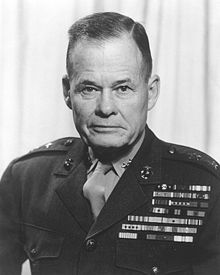

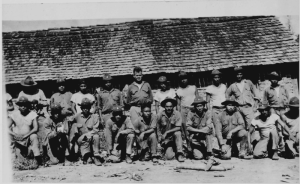
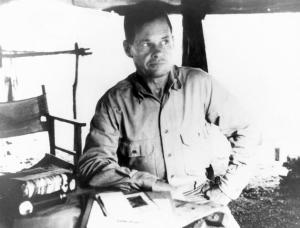
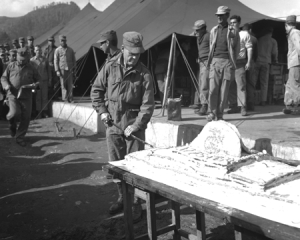
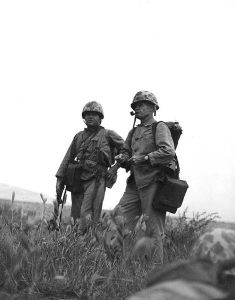


Recent Comments